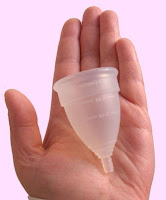 I met some interesting people on Tuesday while waiting at the car wash. One of them, a lady, asked whether I had heard about a menstrual cup, and I repeated after her "a menstrual what?". She was not surprised at my reaction as this was something she was used to. I got a good lecture on menstrual cups and got a free sample. I also had lots of questions to ask. I got back home and did some more research on menstrual cups. What is a menstrual cup?
I met some interesting people on Tuesday while waiting at the car wash. One of them, a lady, asked whether I had heard about a menstrual cup, and I repeated after her "a menstrual what?". She was not surprised at my reaction as this was something she was used to. I got a good lecture on menstrual cups and got a free sample. I also had lots of questions to ask. I got back home and did some more research on menstrual cups. What is a menstrual cup?
A menstrual cup is a bell-shaped device worn inside the vagina during menstruation to collect menstrual fluid. Unlike tampons and pads, the cup collects menstrual fluid rather than absorbing it. This led to my first question, if it does not absorb? would the blood not spill when I move, somersault, e.t.c? Apparently, it does not. Research shows you can do everything, yoga, swim, dance, e.t.c. On the average, you can wear a menstrual cup for twelve hours, which makes it ideal to use when going on long journeys. This led to my next question? Is twelve hours hygienic I'm still looking for a proven answer. but then, I understand some women wear pads and tampons that long.
Menstrual cups are typically made of silicone or other non-latex materials. Some menstrual cups are reusable, either one cup for an entire menstrual period or one cup for many menstrual periods, while others are intended for one-time use. Menstrual cups can be used for ten years, which makes them more cost efficient and environmentally friendly. This led to my next question, 10 years, how then do you preserve it? Apparently, you are to clean the cup and sterilize it by boiling it in hot water for a few minutes before reusing.
My last question was how to use it? My remark when I saw the size of the menstrual cup was "its bigger than a tampon", It was a challenge overcoming the fear of using a tampon, and now this! The menstrual cup is first folded, and then inserted into the vagina. It will normally unfold automatically and create a light seal against the vaginal walls. In some cases, a woman may need to twist the cup or flex her vaginal muscles to ensure the cup is fully open. Research shows that a menstrual cup, in most women, will sit lower in the vagina than a tampon. If correctly inserted, the cup shouldn't leak or cause any discomfort, as with a tampon.
Is this your first time hearing about a menstrual cup? have you tried it and would you recommend it?
Comments
Post a Comment